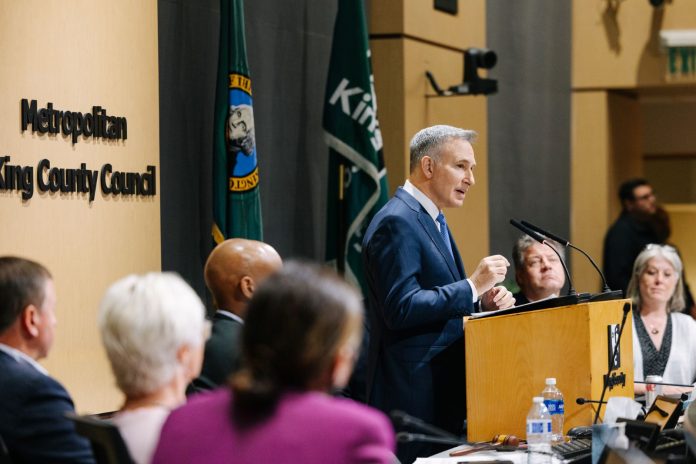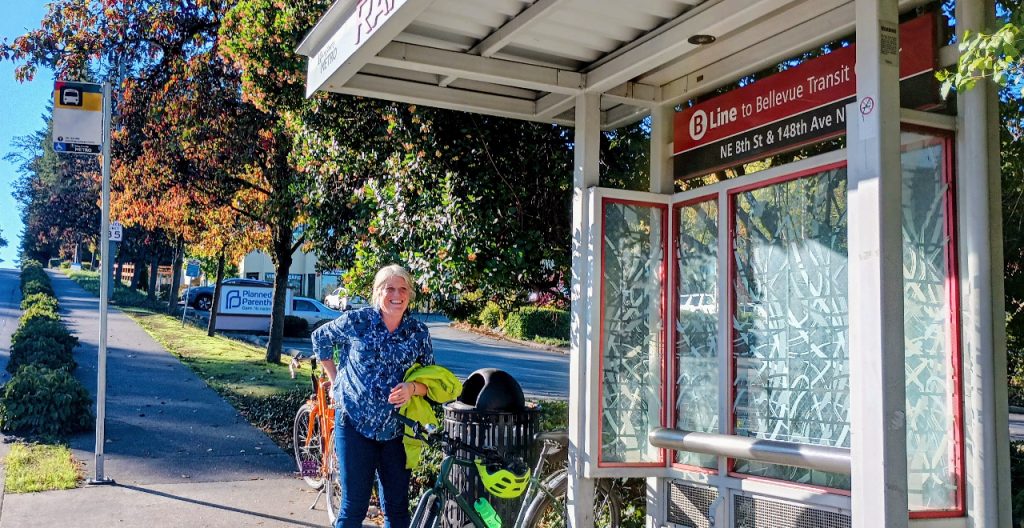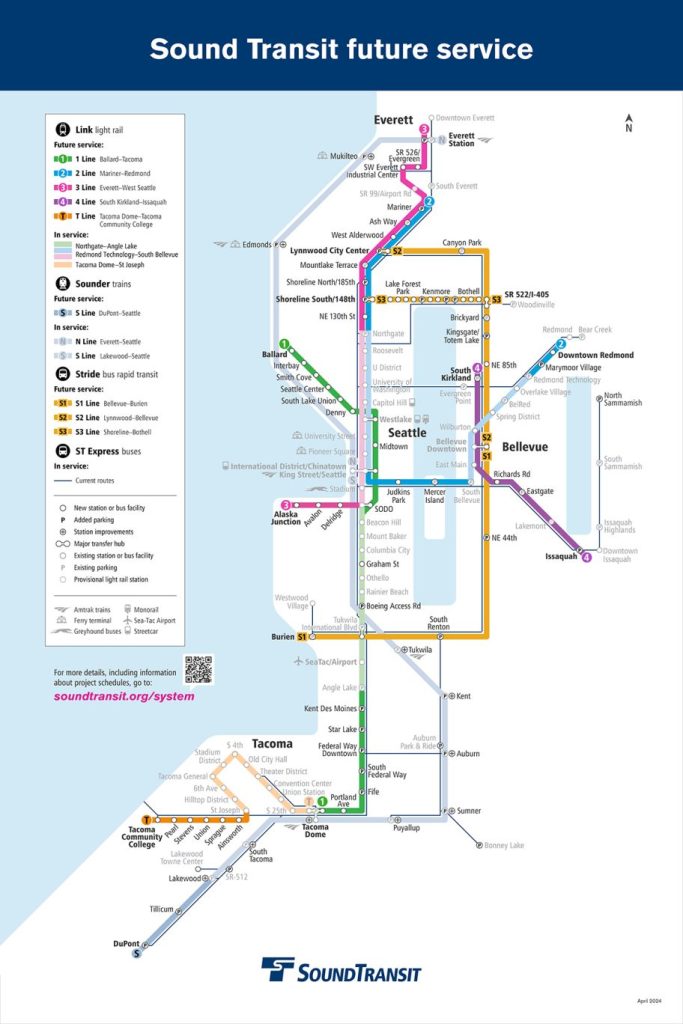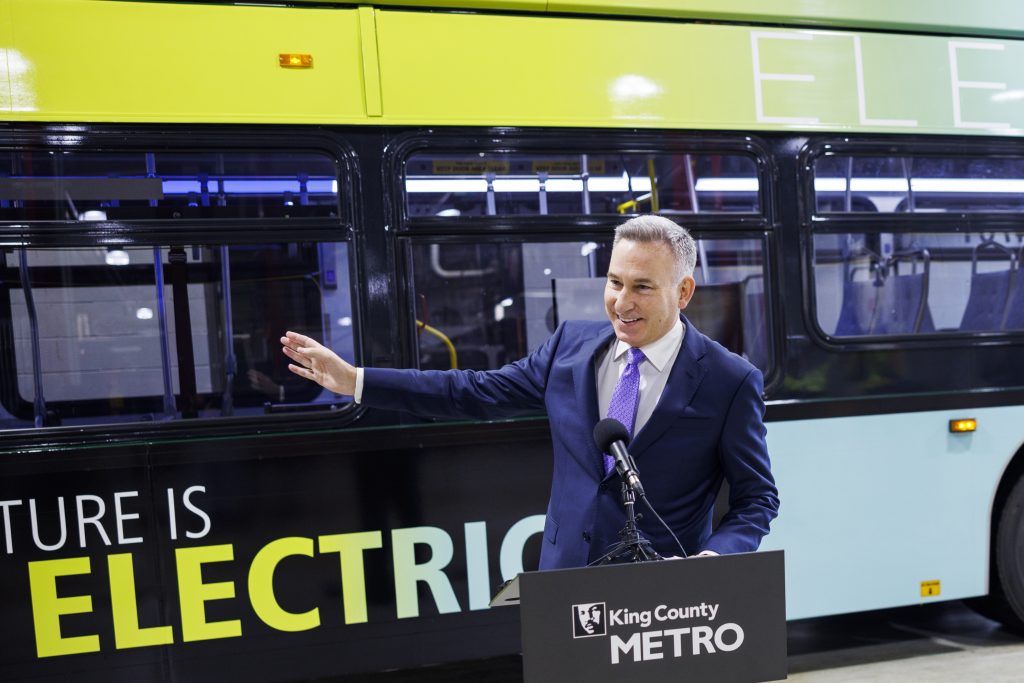
Last Tuesday, Dow Constantine announced he is stepping aside and not seeking a fifth term as King County Executive. The day after, King County Councilmember Claudia Balducci revealed she was hopping into the race for County Executive, and County Councilmember Girmay Zahilay announced he was “strongly considering” a run, as well. On Monday, King County Assessor John Wilson rolled out his own campaign, in a more conservative lane — though all three contenders identify as Democrats.
The race will be the first open primary for the County Executive seat since 2009, setting up a generational fight to lead Washington’s largest county, which is home to 2.3 million residents.
“It has been the honor of a lifetime to serve in this role, but it’s time to let a new leader take the reins and build on the work we have done, and so I will not be seeking re-election,” Constantine said in a prepared statement. “While my time as King County executive will conclude next year, my commitment to this place will be as strong as ever.”
If successful, Balducci’s bid that would make her the first woman and the first Eastsider elected to the county’s highest office since the position was created in 1968. Balducci has represented the 6th District, which includes Bellevue, Kirkland, Redmond, and Mercer Island, since 2016 after serving on the Bellevue City Council from 2004 to 2015, including a stint as Mayor of Bellevue. A long-time Lake Hills resident, Balducci first got into politics advocating for more housing and mixed-use development in her Bellevue neighborhood.
Zahilay, meanwhile, represents Central Seattle, South Seattle, and Bryn Mawr-Skyway on the County Council. A millennial, Zahilay was first elected in 2019, when he defeated civil rights leader Larry Gossett in an upset. If elected, he would be the second Black person to lead the county, following in Ron Sims’ footsteps. Wilson would be the sixth White man to hold the office, which was established in 1969, replacing a three-member commission that had led the County previously.
Balducci told The Stranger last week that housing, transit, and public safety are the pillars of her campaign, issues where she has built a reputation as a policy wonk. Balducci has been one of the region’s loudest voices in support of upgrading public transit, improving traffic safety, and building more housing.

“I’m excited for the opportunity to bring my experience, perseverance and proven record to the office of County Executive,” Balducci said in a prepared statement. ”Throughout my career, I have always focused on outcomes that make a difference for the people of King County: transportation, housing and public safety. Our communities are growing increasingly expensive – which is why I fight for expanded access to affordable housing and convenient, sustainable transportation options. We deserve to feel and be safe in our communities – which is why I have delivered public safety solutions from support for law enforcement to crime prevention, and behavioral health responses.”
Balducci has served on the Sound Transit Board of Directors since 2010, where she shepherded the East Link project — now known as the 2 Line — through tough alignment fights, lawsuits from anti-transit advocates, and a spate of construction issues. Despite those setbacks, the 2 Line launched service in April, with the full extension to Mercer Island and Seattle expected in late 2025.
Having chaired Sound Transit’s Systems Expansion Committee for much of the Sound Transit 3 (ST3) era, Balducci understands the innerworkings of Sound Transit like few others. The 2016 ballot measure promised to build 62 miles of additional light rail, roughly 45 miles of bus rapid transit, and extend and boost service on South Sounder commuter rail. ST3 planning has hardly gone smoothly thus far, but Balducci has consistently been fighting for improvements, elevating the role of outside experts and process improvements.

Balducci stressed the importance of getting light rail expansion right in her announcement press release.
“Completing our light rail system will be one of the most important legacies we leave for our economy, climate, and future generations,” Balducci said. “As both an advocate for light rail expansion to leading regional project delivery, I have unmatched experience and commitment to getting the lines built, and transforming communities throughout our region.”
The King County Executive has the most influential role on Sound Transit Board of Directors, with the authority to appoint the other nine members of King County’s delegation on the 18-member board. The county executives from King, Pierce, and Snohomish counties have also rotated chair duties, historically.
Advertised at $54 billion when in passed a regional vote in 2016, ST3 is the second largest transit measure in U.S. history, trailing only Los Angeles’s Measure M. However, every project is facing cost overruns and planning delays due a number of obstacles.
For example, West Seattle Link’s budget ballooned from $4 billion in 2022 to around $7 billion in the latest estimate, and that could be the tip of the iceberg. As a West Seattleite, West Seattle Link has been something of a personal project for Constantine, and he has defended the project against critics who have been asking the board to rethink the line entirely.
The $11 billion Ballard Link project is slated to get a budget update next year, and a similar 75% cost jump could put enormous strain on the agency’s finances, delaying the project significantly. The board’s decision to jettison a key hub station in Chinatown and move a promised Midtown Station to Pioneer Square do not appear to have solved the broader cost issues with Ballard Link — even if they bolster Constantine’s plans to redevelop the County’s campus around the new Pioneer Square hub station.
Meanwhile, the Tacoma Dome Link Extension was dealt a three-year setback by failing to adequately account for tribal resources in South Federal Way and a floodplain in Fife, forcing the agency to add an SR 99 alternative back into the study. The Everett Link Extension is facing similar budget bloat issues and questions about a route that is heavy on displacement of residents and business and continues to take an inefficient and costly dogleg toward Paine Field, where a secondary airport and Boeing campus offer only a moderate draw for riders. Mercifully, Issaquah Link planning has yet to begin in earnest.

The county executive is also tasked with overseeing King County Metro, the largest transit agency in the state, where things are not necessarily going much better. A fiscal cliff is looming and ridership and service levels continues to be well below pre-pandemic levels. An ambitious Metro Connects plan to boost bus frequencies and expand Metro’s RapidRide network have largely been put on the backburner in favor of Constantine’s aggressive plan to fully electrify the bus fleet by 2035, relying on unproven battery bus technology in the process.
If that weren’t enough, the county is also facing major housing affordability challenges and growing homelessness crisis. Reports and studies have repeatedly confirmed that the county has a shortage of housing and needs to ramp up production of affordable housing to ease the burden on working-class and low-income residents. But the Regional Homelessness Authority that was founded under the hope of galvanizing the region to action to streamline homelessness services and expand supportive housing instead has been mired in scandal and ineffectiveness, yet another political football. For his part, Wilson suggested he would disband the agency during his round of campaign rollout interviews. As chair of King County’s first Affordable Housing Committee, Balducci is well versed in housing policy, and has voiced support for new state laws that have the potential to move the needle on housing.
Long story short, the next King County Executive will have their hands full. Challenges keeping infrastructure projects on-time and on-budget and homebuilding from suffering death by a thousand cuts are hardly unique to King County. But in an environment where the federal government is more likely to be a hindrance than a help, counties like King will have to forge their own path and find a way forward.
In large part, Constantine’s legacy appears to hinge on the successful implementation of the transit lines ST3 funded and the ability to boost housing production and reduce displacement near those investments. Nearly every ST3 line is facing major delays and significant alignment and design questions unlikely to be settled in the last year of his tenure. Thus it will fall on his successor — whoever that may be — to cement that legacy for good or ill.
Doug Trumm is publisher of The Urbanist. An Urbanist writer since 2015, he dreams of pedestrian streets, bus lanes, and a mass-timber building spree to end our housing crisis. He graduated from the Evans School of Public Policy and Governance at the University of Washington in 2019. He lives in Seattle's Fremont neighborhood and loves to explore the city by foot and by bike.

